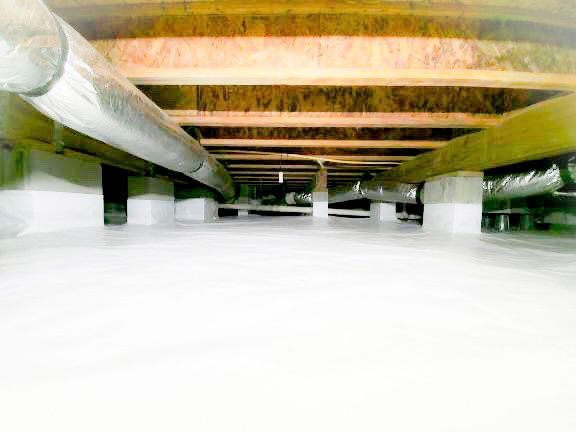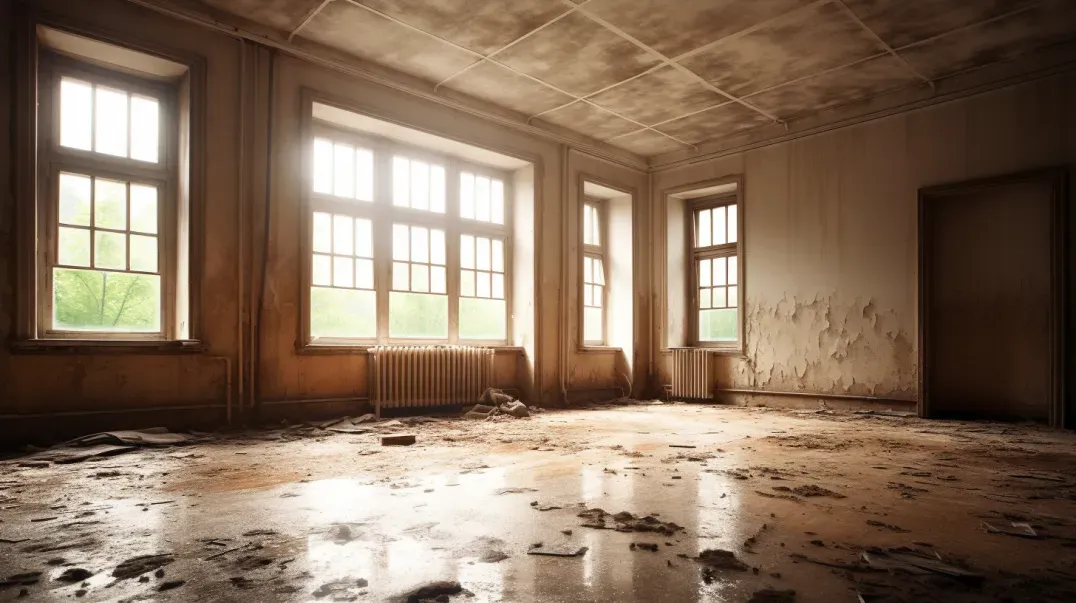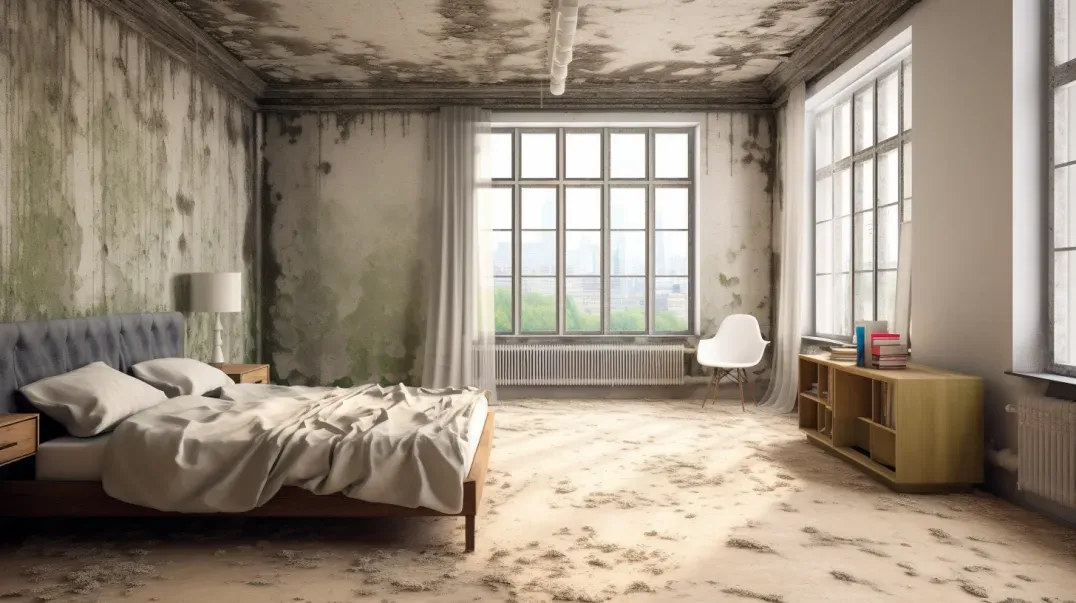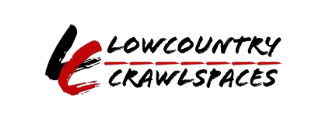The Psychology of a Mold-Free Home: Health and Wellness Benefits
Mold in indoor environments is more than just an unsightly nuisance or a simple homeowner’s concern; it's a significant health hazard that can affect both the physical health and mental well-being of individuals exposed to it. The presence of mold can lead to a variety of respiratory issues, allergic reactions, and even long-term illnesses, while also impacting mental health through stress, anxiety, and other psychological effects.
This blog will delve into the multifaceted impact of mold exposure, exploring how it can affect the body and mind. We will cover the types of health problems caused by mold, including specific symptoms and conditions, and discuss the broader psychological consequences of living in mold-infested environments. Understanding these impacts can help in taking prompt and effective action to mitigate mold exposure and protect one's health and quality of life.
Join us as we explore the critical reasons why mold prevention in homes and workplaces is essential, not only for maintaining the structural integrity of buildings but also for safeguarding the inhabitants' health and mental well-being. This comprehensive overview aims to raise awareness about the serious effects of mold and highlight the importance of addressing mold issues promptly and effectively.
Understanding the Health Risks of Mold
Mold growth in indoor environments is a significant health concern that can affect individuals of all ages and health statuses. The presence of mold can lead to a variety of adverse health effects, particularly affecting the respiratory system, and can exacerbate existing health problems, especially in vulnerable populations. This section explores the physical health implications of mold exposure and its profound impact on sensitive groups such as children, the elderly, and those with pre-existing conditions.
Physical Health Implications of Mold Exposure
Mold exposure can lead to numerous health issues, primarily through inhalation of mold spores, which can irritate the airways and lead to respiratory problems. Below are the key health complications associated with mold exposure:
Respiratory Issues:
- Allergic Reactions: Mold can cause allergic reactions in many individuals, which can range from mild allergic rhinitis to severe asthma attacks. Symptoms often include sneezing, runny nose, red eyes, and skin rash (dermatitis).
- Asthma Exacerbation: For people with asthma, mold exposure can trigger severe asthma episodes, where symptoms such as wheezing, breathlessness, chest tightness, and nighttime coughing worsen.
- Infectious Diseases: In immune-compromised individuals or those with chronic lung illnesses, mold can cause more serious respiratory infections.
Other Health Problems:
- Toxic Effects: Some molds produce mycotoxins that can be especially harmful, even potentially causing toxic effects if ingested, inhaled, or touched. These toxins can affect various systems of the body and lead to neurological problems and in some cases, death.
- Hypersensitivity Pneumonitis: This is a rare immune system disorder that can develop after prolonged exposure to mold, causing inflammation of the lung tissue.
- Irritant Effects: Mold can act as an irritant, causing a burning sensation in the airways, eyes, skin, and throat.
Mold and Its Impact on Vulnerable Populations
Certain populations are more susceptible to the adverse effects of mold due to their age, health status, or immune system functionality. Here’s how mold exposure specifically impacts these vulnerable groups:
Children:
- Developmental Risks: Children, whose immune systems and bodies are still developing, are at a higher risk of developing respiratory problems from mold exposure. Chronic (long-term) respiratory exposure during a child’s developmental phase can lead to more permanent health issues like asthma.
- Increased Sensitivity: Children are more susceptible to mold allergies compared to adults, which can lead to allergic rhinitis or asthma.
The Elderly:
- Compounded Health Issues: Elderly individuals often have pre-existing health conditions that can be exacerbated by mold exposure. Their bodies are less efficient at fighting off infections, making them more susceptible to respiratory complications.
- Higher Risk of Infections: Due to generally weaker immune systems, the elderly are at a higher risk of contracting mold-induced infections.
Individuals with Pre-existing Health Conditions:
- Immune-compromised Individuals: Those with compromised immune systems, such as people with HIV/AIDS, autoimmune disorders, or undergoing chemotherapy, are significantly more vulnerable to mold infections.
- Chronic Respiratory Disease: Individuals with chronic respiratory diseases such as COPD or asthma may experience frequent exacerbations or worsening of their symptoms upon mold exposure.
The Psychological Impact of Living with Mold
While the physical health risks associated with mold exposure are well-documented, the psychological impact is equally significant but less recognized. Living in mold-infested environments not only exacerbates health worries but also significantly affects mental well-being and daily life quality. This section explores the mental health effects related to chronic mold exposure, specifically focusing on the stress and anxiety it causes, as well as its broader impact on life satisfaction and comfort.
Stress and Anxiety Related to Mold Issues
The presence of mold can create continuous uncertainty and distress for residents, leading to significant psychological strain. Here’s how dealing with persistent mold problems can affect mental health:
Chronic Stress:
- Health Worries: Ongoing exposure to mold can lead to constant anxiety about personal and family health, especially when symptoms such as coughing, wheezing, or skin irritation persist. This stress is compounded if members of the household are particularly vulnerable, such as children or the elderly.
- Financial Strain: The costs associated with mold remediation can be substantial, and the fear of potential mold-related damage to property value adds to financial pressures. Homeowners might feel overwhelmed by the expenses of repeated cleanings or extensive repairs.
Anxiety Disorders:
- Increased Anxiety: Individuals living in mold-infested homes often experience increased levels of anxiety, worrying about the visibility of mold, the stigma from visitors, and the safety of their living environment.
- Sleep Disturbances: The stress and anxiety from mold exposure can disrupt sleep patterns, leading to insomnia and sleeplessness, which further aggravates daily stress levels.
Emotional Toll:
- Mood Impacts: Continuous exposure to a moldy environment can affect mood, leading to irritability, decreased patience, and a persistent sense of unhappiness.
- Helplessness: Feeling unable to control or effectively address the mold problem can lead to feelings of helplessness and frustration, which are common triggers for depression.
The Effect of Mold on Quality of Life
Mold’s presence can permeate various aspects of daily living, reducing overall life satisfaction and comfort. It can transform a home, supposed to be a safe haven, into a source of discomfort and anxiety. Here's how mold can impact day-to-day living:
Daily Disruptions:
- Home Enjoyment: Mold can cause unpleasant odors and visible decay, which significantly detracts from the aesthetics and comfort of a home. The discomfort of living in such environments can reduce the overall enjoyment and use of contaminated spaces.
- Social Isolation: The embarrassment or stigma associated with moldy conditions might discourage residents from inviting guests over, leading to social isolation and increased feelings of loneliness.
Health and Comfort:
- Aggravated Conditions: For those with pre-existing health issues, particularly respiratory or allergic conditions, mold can drastically decrease their quality of life by exacerbating their symptoms.
- Habitability Concerns: In severe cases, mold can make parts of a home uninhabitable, displacing residents either temporarily or permanently, which significantly disrupts daily life.
Cognitive and Behavioral Effects:
- Concentration Problems: Exposure to mold can affect cognitive functions, including concentration and decision-making, due to the stress and possible mycotoxin effects on the brain.
- Behavior Changes: The stress from living with mold can also lead to changes in behavior; individuals might avoid certain areas of the home or spend less time at home altogether.
Benefits of a Mold-Free Living Environment
Living in a mold-free environment significantly enhances both physical and mental health. The absence of mold leads to improved indoor air quality, which can drastically reduce the occurrence of respiratory issues and allergic reactions. Additionally, it contributes to greater emotional well-being and comfort, creating a safer and more pleasant living space. This section explores the extensive benefits that stem from maintaining a mold-free home.
Improved Air Quality and Health
The quality of indoor air is heavily influenced by the presence of mold spores, which can be detrimental to health if inhaled. Here’s how a mold-free environment positively impacts physical health through improved air quality:
1. Respiratory Health:
- Reduction in Allergens: Mold spores are known allergens that can cause respiratory issues such as sneezing, coughing, and wheezing. Eliminating mold helps reduce these airborne allergens and minimizes the risk of respiratory distress.
- Lower Risk of Asthma and Allergy Exacerbations: For individuals with asthma or severe allergies, mold can trigger intense episodes. A mold-free home helps in managing asthma symptoms and can lead to a marked decrease in the use of asthma or allergy medications.
2. Decrease in Infectious Diseases:
- Prevents Mold-Related Infections: Certain types of mold are capable of producing infections, especially in the immunocompromised. By preventing mold growth, these potentially serious health risks are minimized.
3. General Health Improvements:
- Enhanced Immune System: Continuous exposure to mold can weaken the immune system, making one more susceptible to diseases. Living in a mold-free environment helps strengthen the immune response.
- Reduction in Dermatological Issues: Mold exposure can cause skin irritation and rashes. Clean, mold-free air contributes to better skin health, preventing dermatological issues related to mold allergies.
Enhanced Mental Well-being and Comfort
The benefits of living in a mold-free environment extend beyond physical health, significantly impacting mental health and overall life satisfaction:
1. Stress Reduction:
- Alleviates Health Worries: The knowledge that one’s home is mold-free can alleviate the constant stress and anxiety associated with mold exposure risks. This reduction in stress contributes to better overall mental health and quality of life.
- Increased Feelings of Security: Ensuring that the living environment is safe and free from health hazards like mold increases an individual's sense of security and comfort in their home.
2. Improved Living Conditions:
- Enhanced Comfort: Mold can produce foul smells and cause physical discomfort. A clean and fresh living environment without mold improves the overall comfort and aesthetics of the home.
- Better Sleep Quality: Mold exposure has been linked to sleep disturbances. A mold-free bedroom environment can enhance sleep quality, leading to better rest and overall health.
3. Psychological Well-being:
- Mood Improvement: The absence of health symptoms related to mold exposure, such as headaches or respiratory issues, can lead to mood improvements and a more positive outlook on life.
- Reduced Depression and Anxiety: Living in a clean, healthy environment free from mold reduces levels of anxiety and depression, which are often exacerbated by poor health or uncomfortable living conditions.
Achieving and Maintaining a Mold-Free Home
Maintaining a mold-free home is crucial for ensuring the health and safety of its occupants and preserving the structural integrity of the building itself. Effective prevention and regular maintenance are key strategies in achieving a mold-free environment. This section outlines practical steps for preventing mold growth and the importance of consistent home maintenance and inspections to keep mold at bay.
Prevention Strategies for a Mold-Free Environment
Preventing mold growth starts with understanding the conditions that encourage its presence and taking proactive measures to mitigate these factors. Here are practical tips and strategies to keep your home mold-free:
Control Humidity Levels:
- Dehumidifiers: Use dehumidifiers in high-moisture areas such as basements, bathrooms, and kitchens to maintain humidity levels at or below 60%, which is generally inhospitable to mold growth.
- Proper Ventilation: Ensure adequate ventilation in moisture-prone areas by using exhaust fans and opening windows when possible to allow moisture to escape.
Promptly Repair Leaks:
- Regular Checks: Regularly inspect plumbing for leaks and fix them promptly. Pay special attention to under-sink areas, bathroom joints, and water heaters.
- Roof and Window Inspections: Check roofs and windows periodically for leaks that can allow water to seep into the structure and provide a moist environment conducive to mold.
Optimize Air Circulation:
- Furniture Placement: Avoid placing furniture directly against walls as it can restrict air flow and create moist pockets. Leave a few inches between the wall and your furniture to promote better air circulation.
- Use Fans and AC Units: Utilize fans and air conditioning units to keep air moving and reduce stagnation of humid air.
Use Mold-Inhibiting Products:
- Cleaning Solutions: Clean bathrooms, kitchens, and other wet areas with mold-inhibiting products to prevent mold spores from taking hold.
- Paint Additives: When painting moist areas, use mold-inhibitor additives in paints to provide a protective barrier on walls and ceilings.
Maintain Dryness:
- Remove Wet Items: Quickly remove wet carpets, clothing, or any fabrics that can harbor mold if left damp.
- Address Condensation: Reduce condensation by adding insulation to cold surfaces like pipes, and by using thermal pane windows.
Regular Maintenance and Inspections
Routine maintenance and regular inspections are critical in the early detection and management of potential mold issues. These practices not only help in identifying the onset of mold growth but also play a pivotal role in preventing its spread:
Importance of Routine Inspections:
- Detect Issues Early: Regularly inspect your home for signs of mold, paying special attention to hidden areas such as behind cabinets, basements, attics, and around window sills.
- Professional Assessments: Consider hiring a professional to conduct a thorough mold inspection annually, especially if your home has a history of mold problems or if it's located in a mold-prone area.
Maintenance Checklist:
- Clean Gutters and Drains: Ensure that gutters and drains are clean and free from debris to prevent water buildup around the foundation.
- Check Ventilation Systems: Regularly clean ducts and ensure that air filtration systems are working properly to prevent mold spores from circulating throughout the home.
- Dry Areas Promptly: After any water intrusion, whether from a flood, spill, or condensation, dry the affected areas within 24 to 48 hours to prevent mold growth.
Preventative Repairs:
- Seal Grout Lines: Regularly apply sealant to grout lines in showers and around sinks to prevent moisture seepage into subflooring and behind walls.
- Update Weather-Stripping: Replace worn weather-stripping around windows and doors to prevent rainwater from entering the home.
The Role of Design and Aesthetics in Mold Prevention
Design and aesthetics play a crucial role in mold prevention in homes. Not only do they contribute to the visual appeal and ambiance of a living space, but they also significantly influence the structural aspects that deter mold growth. This section explores how the strategic choice of building materials and design can foster a mold-resistant environment, and how incorporating nature and prioritizing cleanliness can enhance this effect psychologically and practically.
Mold-Resistant Building Materials and Design
Choosing the right materials and architectural designs can drastically reduce the risk of mold growth by eliminating the conditions that foster its development. Here’s how homeowners can use these elements to their advantage:
Mold-Resistant Materials:
- Flooring: Opt for mold-resistant flooring options like ceramic tile, slate, or vinyl. These materials do not absorb moisture as quickly as others, such as carpet or hardwood, making them easier to dry and less hospitable to mold.
- Paints and Finishes: Use paints that contain mold inhibitors, which prevent the growth of mold on the walls. Similarly, mold-resistant drywall or green board is particularly effective in moist areas like bathrooms and kitchens.
- Insulation: Choose fiberglass or foam insulation over cellulose types because they are less absorbent and more resistant to mold growth.
Thoughtful Architectural Design:
- Sloped Designs: Ensure that flat surfaces are designed with a slight slope to prevent water accumulation, which is particularly important in areas like roofs and around windows.
- Proper Ventilation: Design homes to include adequate ventilation, especially in high-moisture areas such as kitchens, bathrooms, and laundry rooms. This can be achieved through the strategic placement of windows, vents, and exhaust fans.
- Sunlight Exposure: Incorporate plenty of windows or skylights in the design to maximize natural sunlight exposure, which naturally helps to keep mold at bay by drying out potential damp spots.
Incorporating Nature and Cleanliness in Home Design
Integrating natural elements into home design not only provides aesthetic value and a sense of calm but also plays a functional role in mold prevention. Here’s how cleanliness and nature can be harmoniously blended to create a healthy, mold-free environment:
Benefits of Natural Elements:
- Biophilic Design: Utilizing plant life inside the home, like indoor gardens or living walls, can improve indoor air quality by increasing oxygen levels and filtering out pollutants, which helps to prevent mold growth.
- Natural Light: Maximizing natural light not only reduces moisture by drying out potential damp areas but also offers psychological benefits such as improved mood and better overall mental health, which are crucial for a healthy home environment.
Maintaining Cleanliness:
- Routine Cleaning: Regular cleaning schedules prevent the buildup of dust and organic materials that mold spores need to thrive. Ensure that hard-to-reach places and moist areas are kept dry and clean.
- Clutter-Free Spaces: A minimalist design approach helps in reducing clutter that can trap dust and moisture. It also makes it easier to maintain cleanliness, reducing the nooks and crannies where mold could hide and flourish.
Psychological Benefits:
- Stress Reduction: A clean and aesthetically pleasing environment reduces stress and creates a peaceful living space. Stress is known to weaken the immune system, so a stress-reduced environment can indirectly lower the risk of health problems associated with mold.
- Enhanced Well-being: Spaces designed with natural materials and elements can improve psychological well-being. Living in a visually appealing environment that is also mold-free greatly enhances life quality by promoting safety, comfort, and happiness.
FAQs
Contact Lowcountry Crawlspaces Today!
Lowcountry Crawlspaces will do everything we can to ensure your experience with us is excellent.
Request A FREE Estimate
CHECKOUT RECENT POST



Schedule Your FREE Crawl Space Evaluation Today
There Is No Crawl Space Job We Can’t Fix!




